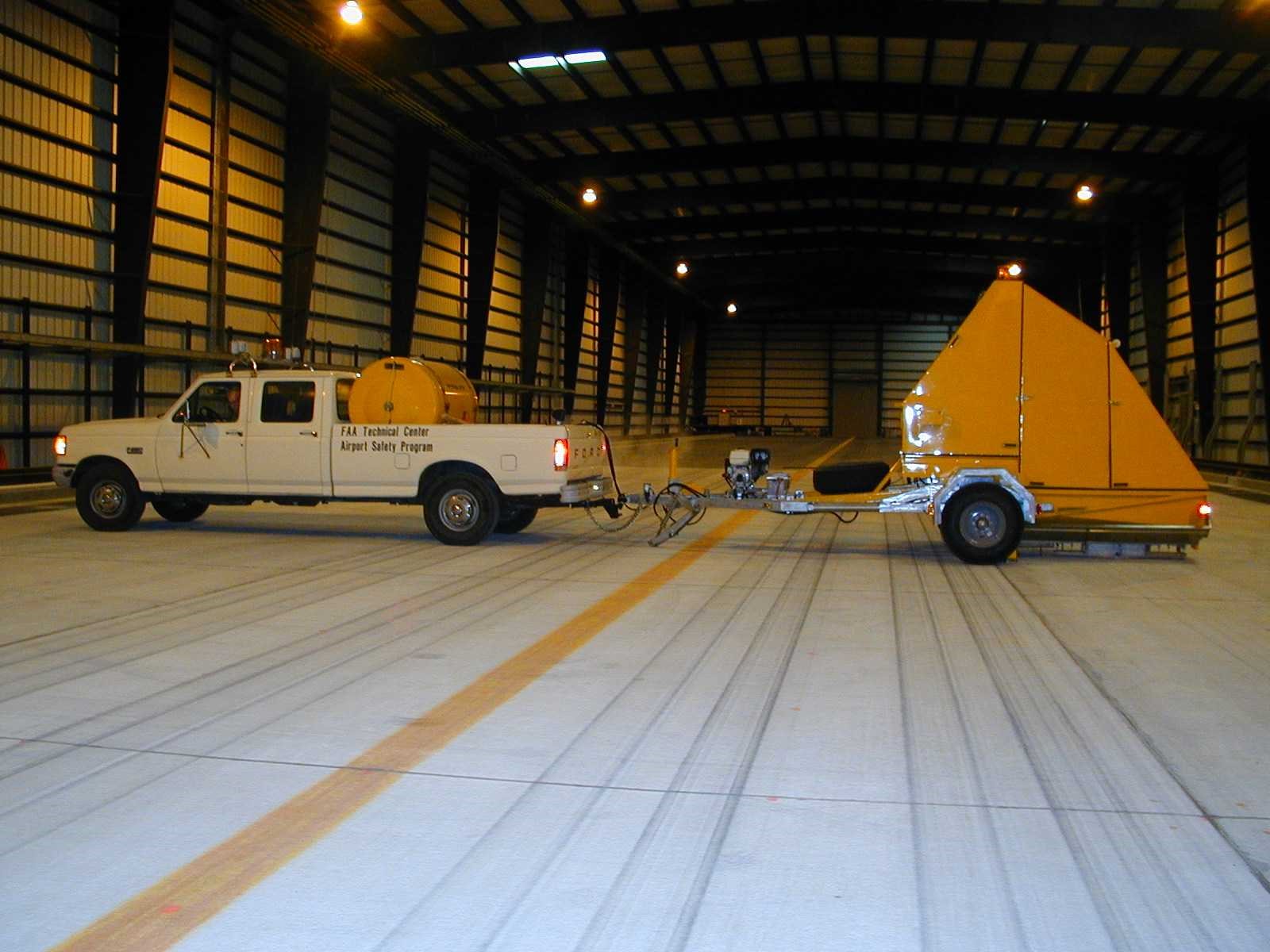CC1 Flexible Non-Destructive Testing (NDT) Plan and Data
Heavy Weight Deflectometer (HWD) Test
The Heavy Weight Deflectometer (HWD) test simulates aircraft wheel loads by dropping a load onto the surface of the pavement and measuring accompanying surface deflections. The KUAB Model 240 HWD device was used for evaluation of the test pavements at the NAPTF for CC1. The KUAB operates on the principle of dropping weights on a series of hard, rubber buffers separated by a second series of weights and buffers which are connected to a loading plate resting on the pavement surface.

FAA’s KUAB Model 240 HWD Equipment (Click to Zoom)
The main objectives of conducting HWD tests were to verify the uniformity of the pavement construction, particularly subgrade strength; investigate the pavement deterioration with traffic and to determine the joint load transfer efficiencies. The same testing method and equipment were used for the HWD testing of flexible pavement test items as in the rigid pavement test items.
HWD tests were conducted on all flexible test items to monitor the pavement structural degradation with traffic and time. These tests were performed on the non-trafficked centerline (C/L), 6-wheel traffic (north) lane, and 4-wheel (south) traffic lane at 10 ft. (3.05 m) offsets, as illustrated in the figure below.

Location of HWD Test Lanes Results (Click to Zoom)
For flexible pavement test items, results confirmed the uniformity of pavement structures within each test item.
Transverse Profiling
Transverse surface profile (TSP) measurements were made with a manually propelled inertial profiling device (CSC Profilair Profilite 300). Measurements were made at two longitudinal lines at the one-third points along the test items about 6 inches to the west of the MDDs perpendicular to the traffic direction (Figure 54). Profile elevations were recorded every 9.84 inches (250 mm) with the speed of 1.2 mph (2 km/h) along the transverse lines.

Transverse Profiling on CC1 (Click to Zoom)
Return to Construction Cycle 1 Main Page